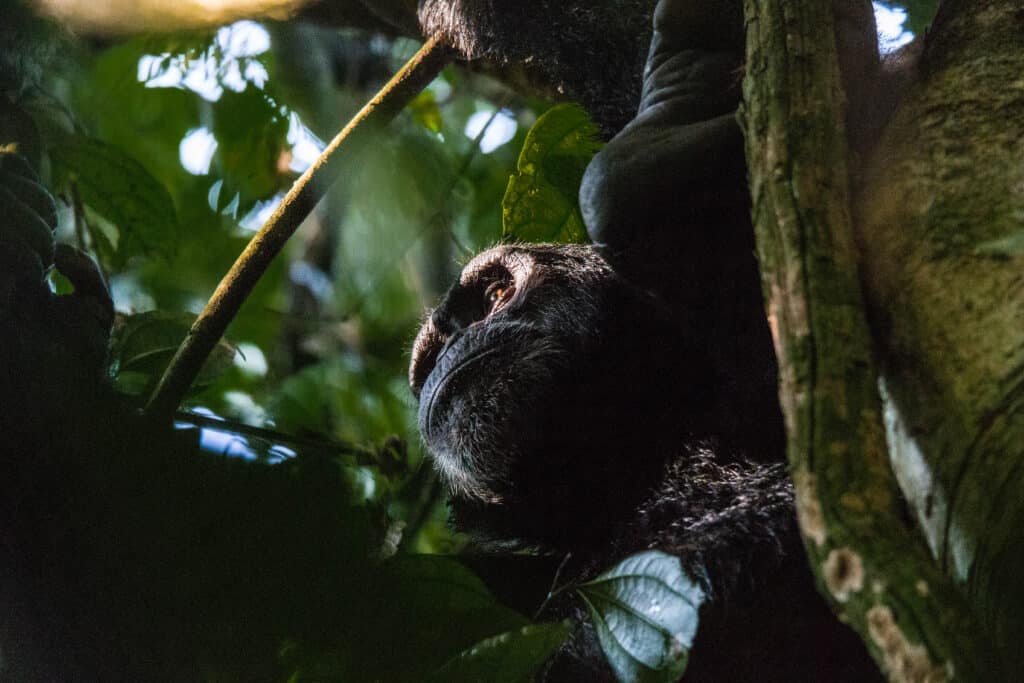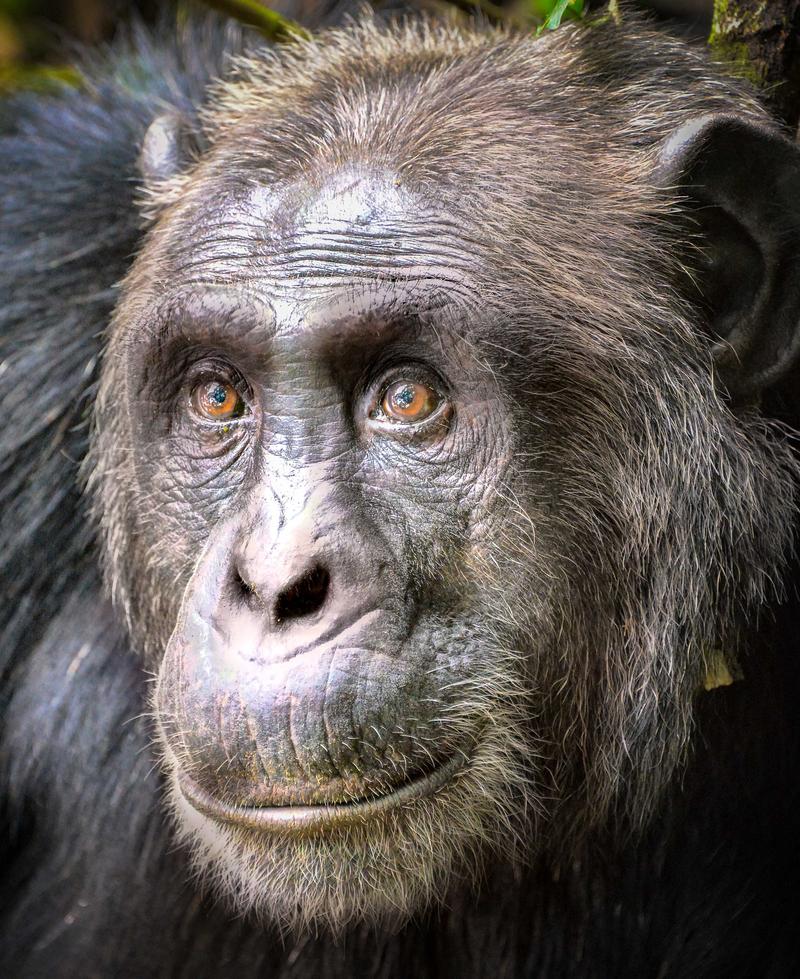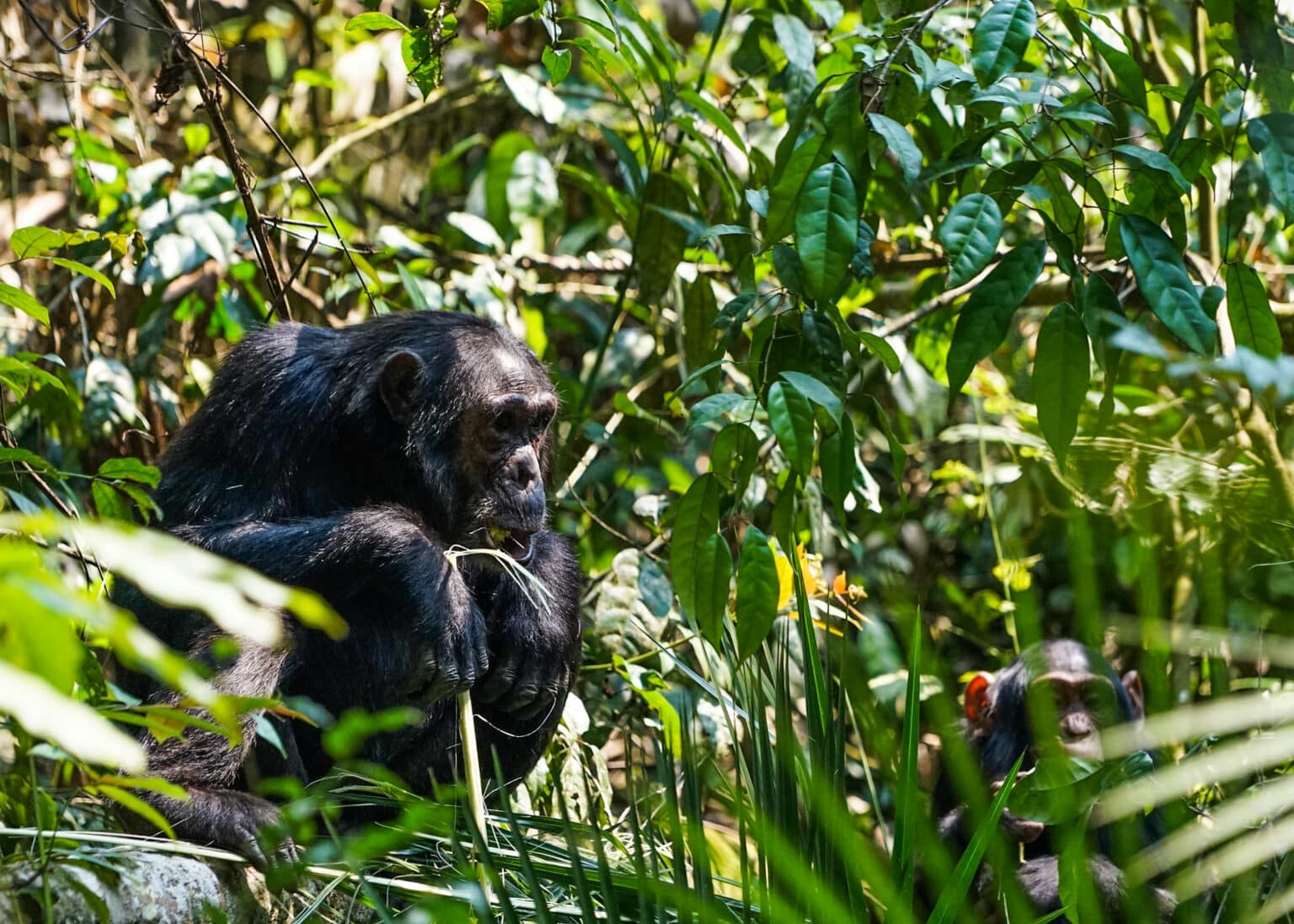Tracking chimps in Kibale National Park
Uganda is home to some incredible opportunities to see wildlife, including tracking chimpanzees in Kibale National Park. It’s one of the finest places in the world to immerse yourself in nature and meet these curious, mischievous, and highly entertaining primates.
Kibale National Park is a dense tropical forest covering 795 sq. km in southwestern Uganda. Located in the Kabarole District, it’s about six hours drive (348 km) from the country’s capital, Kampala. Close by is Fort Portal, a small yet stunning town at the foot of the Rwenzori Mountains, a destination in its own right.
Kibale Forest is part of the larger Albertine Rift, which is one of the most biodiverse regions on the continent and a key destination for wildlife enthusiasts. Tracking chimpanzees is the main attraction but the Park is also home to over 350 recorded species of trees, more than 370 birds, and 70 types of mammals. You’ll find 12 other primate species living here too, including black-and-white colobus monkeys, bushbabies, and red-tailed monkeys. There are also opportunities for guided nature walks to further explore the rich biodiversity and surrounding local communities, their culture and traditions.

Chimpanzees are listed as a critically endangered species by the International Union of Conservation of Nature. Unfortunately, the natural habitats of chimpanzees have been negatively impacted over many decades due to activities like mining, logging, road projects, and oil extraction. Fortunately, these activities have been restricted in Kibale National Park and it therefore offers one of the best opportunities to see chimpanzees in the wild.
Chimpanzees
- Latin name: Pan troglodytes in the family of Hominidae (great apes and humans)
- Endangered – estimated 170,000 to 300,000 left in the wild
- Wild chimpanzees can only be found in Africa
- Humans share about 95 – 98% DNA
- Chimps have the ability to learn sign language and use tools
- Average male chimp weighs 40- 70kg and is 150cm tall
- Chimps are omnivores but are most fond of fruits
- Primarily sleep in trees in nests made from branches
- Average lifespan is around 45 years but some have lived into their 70s
The Kibale Chimpanzee Project monitors populations and conducts species-specific research. In addition, park rangers make regular patrols and the National Park works with local communities through education programs, development projects, and eco-tourism initiatives in order to reduce the possibility of human-wildlife conflicts and to ensure everyone benefits economically from the Park.
Having found the chimpanzee troop, you’ll have just one hour with these wonderful creatures. It’s truly thrilling to observe an animal in its natural habitat, and the daily activities of a chimp sometimes bear startling resemblance to human life! It feels as though you’re part of the family, watching these social creatures groom one another, care for their young, and hop around playing on the forest floor and in the treetops. If you’re lucky, you’ll observe the chimpanzees using tools – poking around for insects with a stick or using rocks to crack open fruits and nuts. You’ll be close enough to see their wide range of facial expressions and you may even catch them dancing, spinning, jumping, or even mimicking you.
Take an adventure from Kampala to Kigali or get in touch to arrange a once-in-a-lifetime tailored journey to Kibale Forest National Park. Read on for some more practical details and travel ideas.

How to get to Kibale National Park
Kibale National Park is located around 300km from Kampala and there are several ways to get there. By car it can take between four to six hours to reach the Park, depending on traffic and road conditions. Or if you’d prefer to take public transport, buses run regularly between Kampala and Fort Portal and you can arrange your own transport to the Park from there. For those who want to skip the hassles of a long road trip, you can book a domestic flight from Entebbe International Airport to either Kasese or to the Mweya airstrip and arrange onward travel from there.
When is the best time to see chimps in Uganda?
The best time to track chimps in Kibale Forest is during the dry season between the months of June to October and December to March when the thick forest vegetation is less dense. The forest has a tropical rainforest climate with relatively high temperatures and there is chance of substantial rainfall all year round, so pack good walking shoes and a waterproof jacket.
Permits for Kibale National Park
In order to track chimps in Kibale Forest, you must buy a permit which costs $200 for foreign non-residents, $150 for foreign residents, and UGX 150,000 for citizens of East Africa. These can be purchased directly from the Uganda Wildlife Authority or from travel agents and tour companies. Permits can also be purchased directly at Kibali National Park headquarters but permits often sell out, especially during peak tourist season, so it’s advisable to book in advance.
Where else can I see chimpanzees?
You can also track chimps in Kyambura Gorge in Uganda’s Queen Elizabeth National Park and Nyungwe National Park in Rwanda. Less on the wild side, you could visit the Ngamba Island Chimpanzee Sanctuary, home to around 50 chimpanzees rescued from the illegal pet and bushmeat trades.
If you’d like to track chimpanzees, colobus and gorillas, join us on a spectacular trip to see the Primates of Rwanda.
